Overwintering artichokes in pots
This has been the driest summer in many years, and my plants have been suffering as a result. My artichokes were really struggling and I decided that overwintering artichokes in pots might be an alternative. This is how it's done!
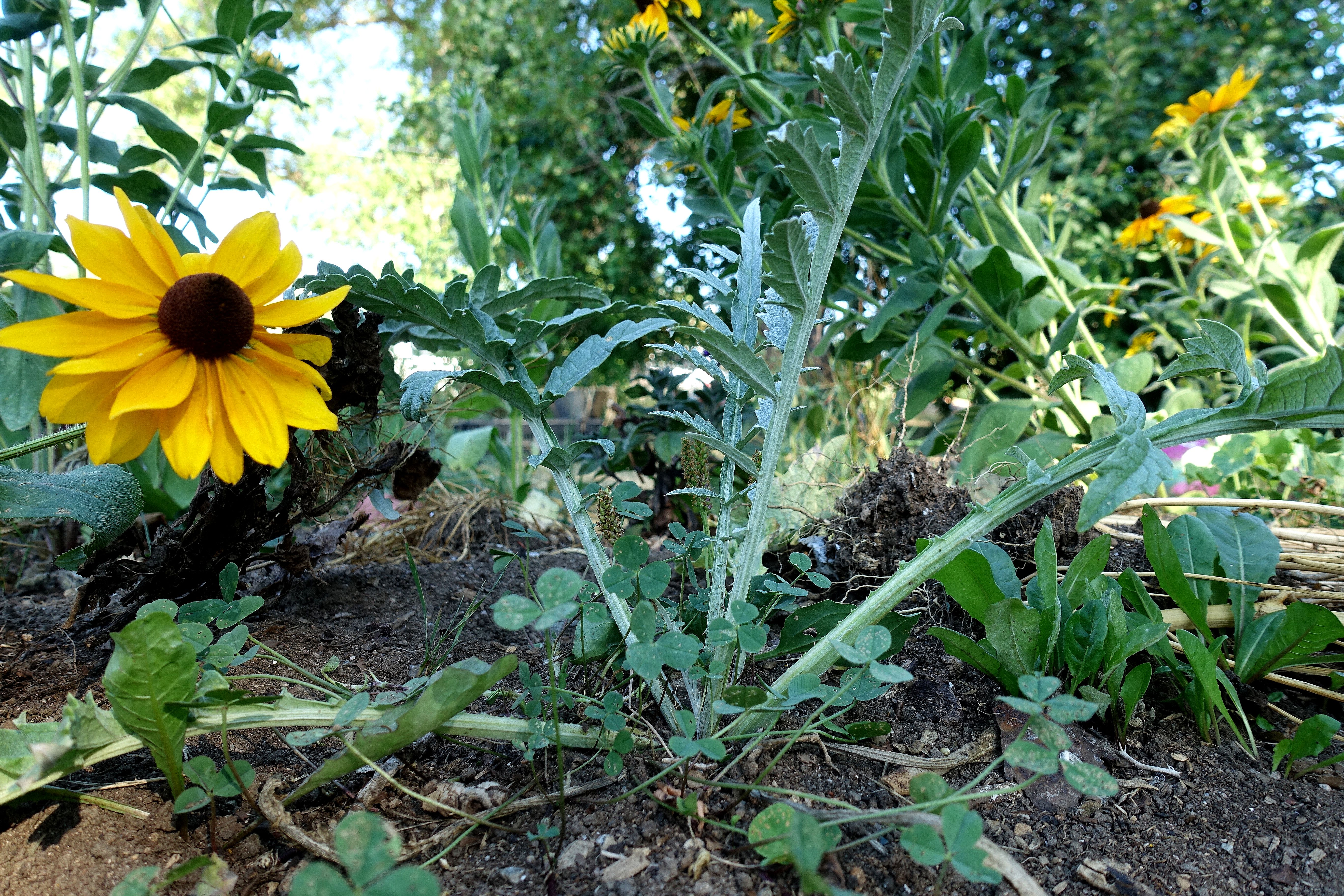
This is what my artichoke bed looked like in the end of July. I knew I had to do something drastic and decided to dig them up and try overwintering artichokes in pots instead.
I was looking forward to a real artichoke feast this year, but I was sadly disappointed! My mind was set on a flourishing bed filled with artichokes, garden cosmos, coneflowers, heliotropes and dahlias. But it turns out that I picked the wrong spot for this project.
I call this my banana bed (read more about creating new beds here: No-dig gardening: Creating new raised beds, or watch my video about New mulched beds on my lawn) This was the first year I started growing in it. The mulch I built the bed with has decomposed really nicely and left me with a nice layer of high quality soil. I decided on artichokes since I find them so beautiful and the whole family loves eating them too.
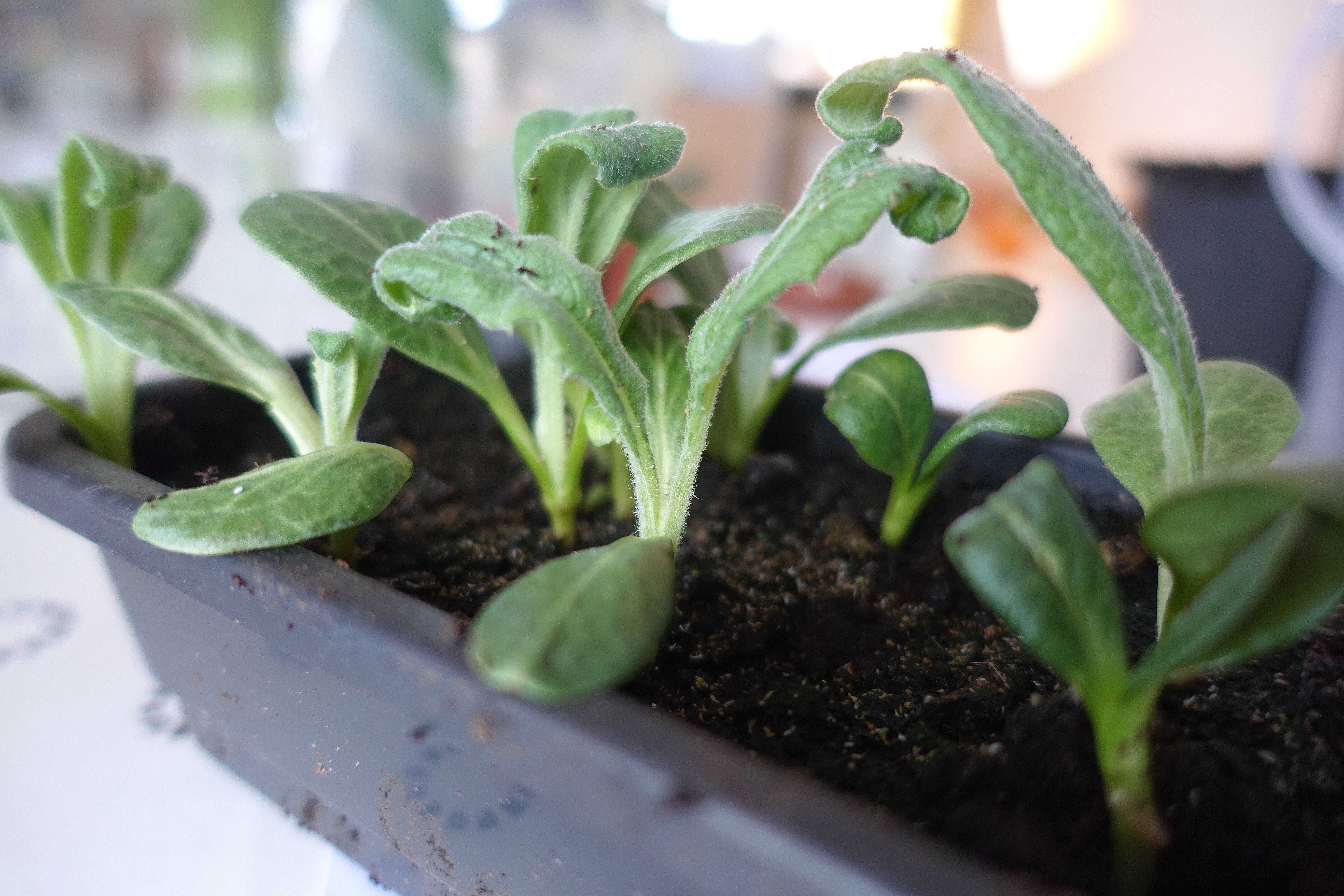
Sow the artichokes early in the season and leave them to grow indoors for a while before planting them outside. These are a few of my little plants in a trough.
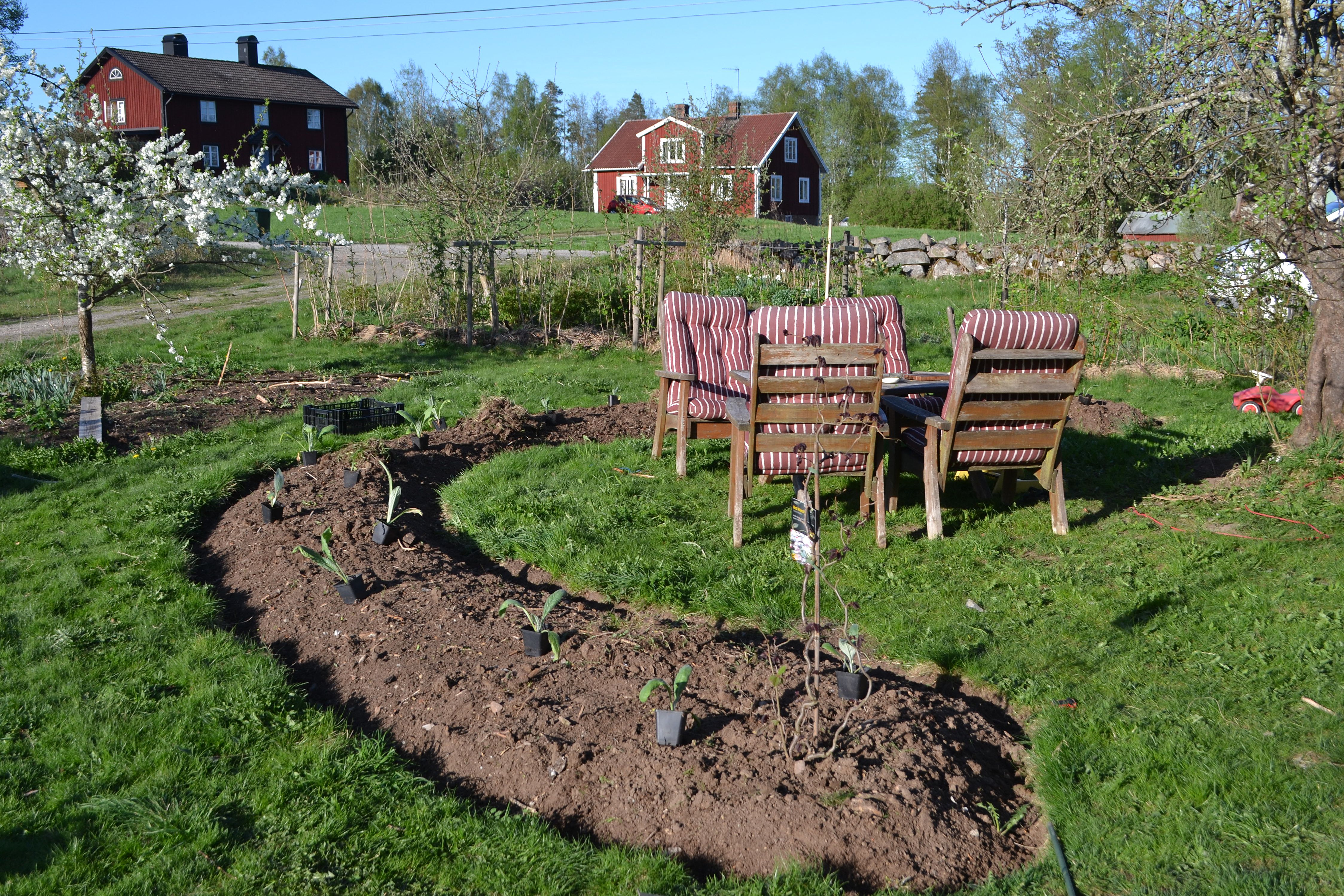
I put the plants in my banana-shaped bed in May, together with my coneflowers, heliotropes, dahlias garden cosmos and snap beans.
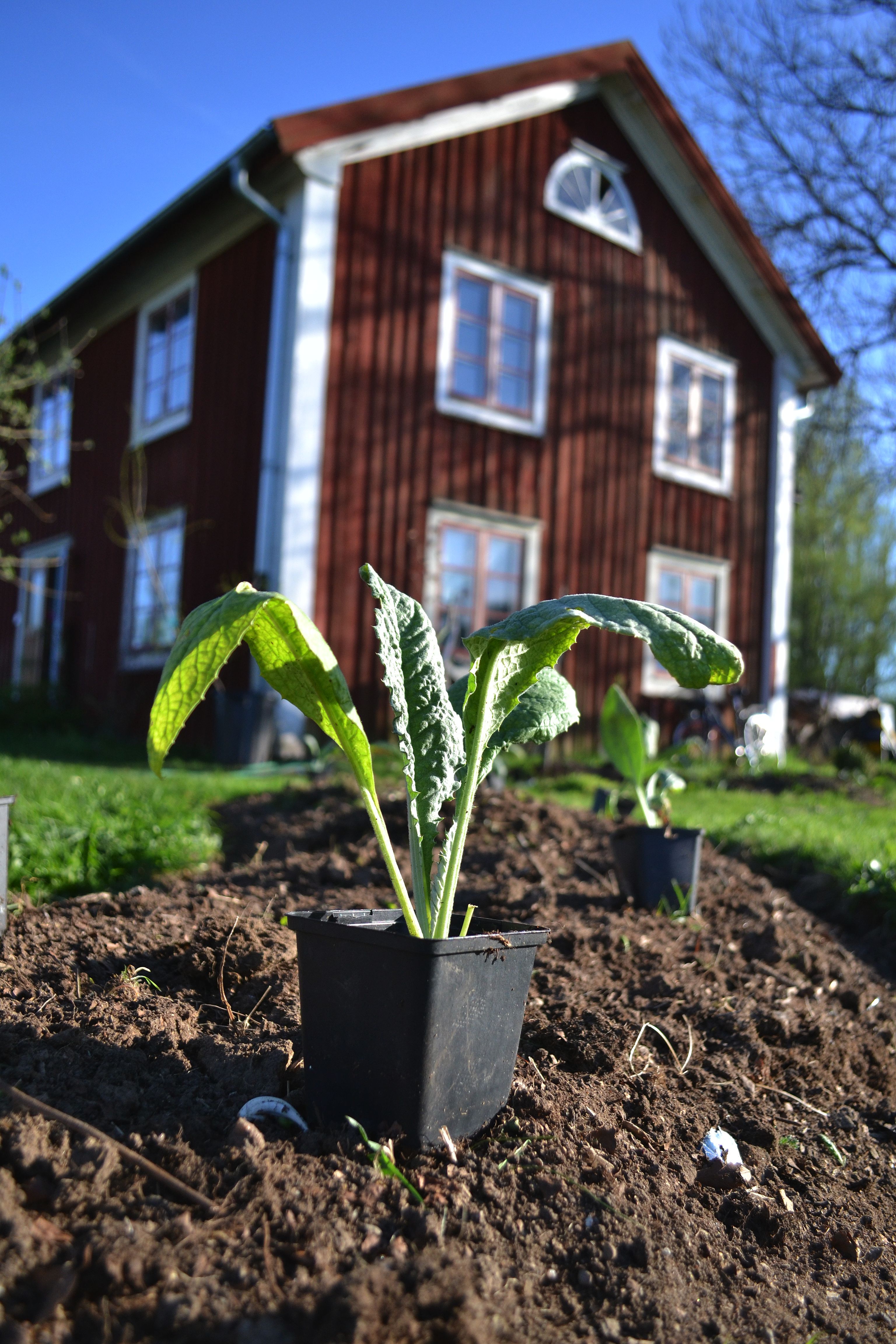
The plants looked so nice at the start of the season. They had been growing nicely in their pots in the polytunnel.
An early start
I sowed the artichokes already in winter and soon had a lot of beautiful plants to look after. I grew the varieties Green Globe, Violet Globe and Violet de Provence. All in all, I had around 30 plants.
Three of my plants were placed in the polytunnel permanently, I put five of them outside in the kitchen garden and the others in the notorious banana bed with my summer flowers. And that was the beginning of the end.
It's been unseasonably hot and dry this summer and I haven't been able to water as much as I would have liked. My plan was to wait for the spring rains, fertilize with nettle water or diluted urine and then cover the whole bed with grass clippings. Artichoke is after all a plant that loves plenty of water and nutrients, and I thought I had set myself up for success. I waited and waited for the rain. But it never came. I tried putting a drip hose out there and watered my bed carefully for shorter periods of time a few days in a row. But it seemed to be hopeless. I couldn't keep watering like this when the drought was so bad.
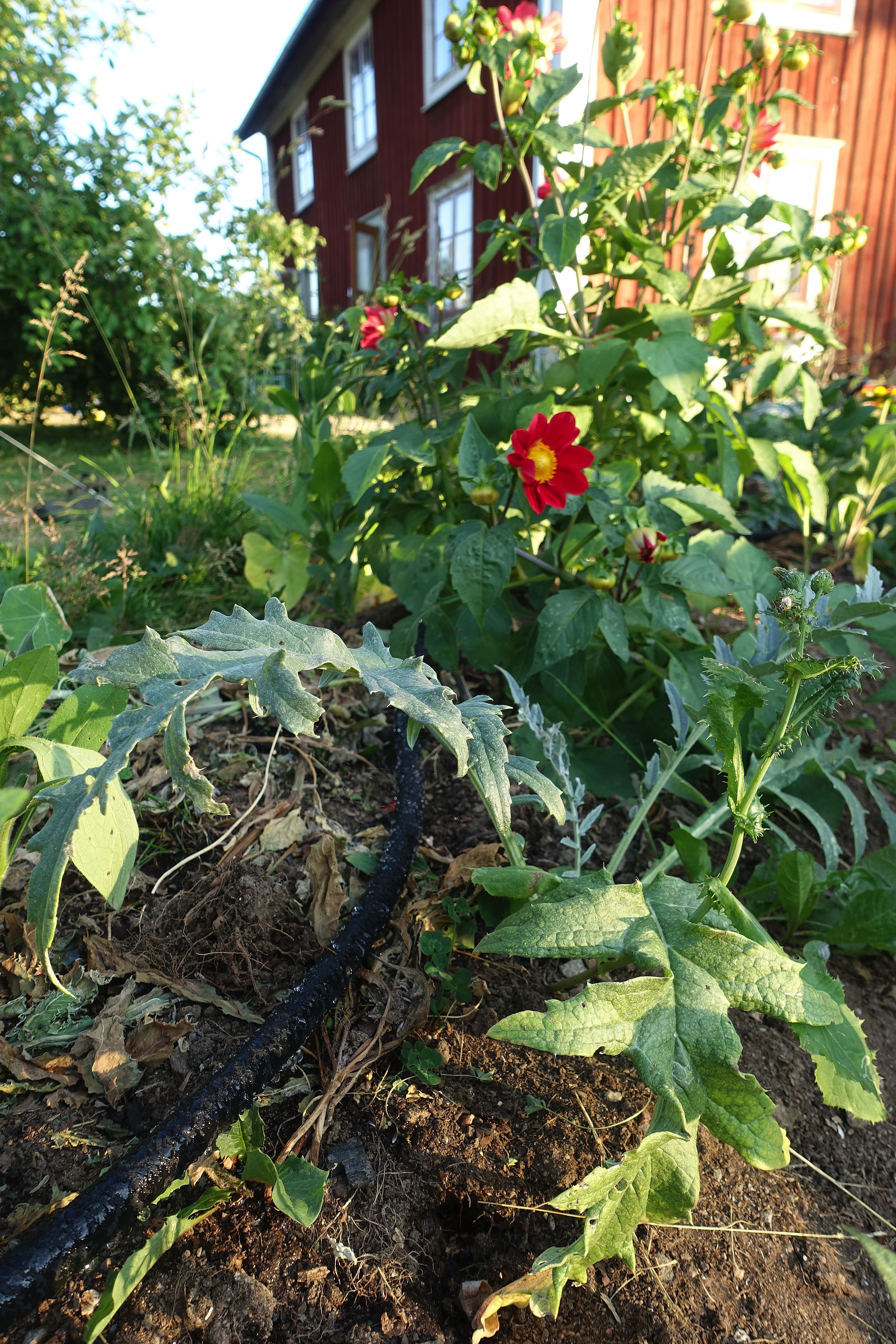
I tried putting a drip hose between the plants in summer. But the drought was just getting worse and I didn't have any mulch left for this project.
Artichokes in pots
I decided on a rescue mission where I dug out all the surviving plants. They looked miserable! I prepared the plants for the move by first leaving them to rest in some water. And then I put them in pots. I had a few deep pots lying around at home and they seemed like the perfect choice. Artichokes develop very large root systems, so make sure they get the space they need. I used regular potting soil from a bag.
My idea was to simply leave the plants to recover and grow in the pots for a few months. After that, I decided to put them in a bed in one of the polytunnels. I'm going to leave them there to overwinter in their pots, dug down into the soil. And then I'll give the whole thing a new shot next year. I might even try the banana bed again.
Overwintered artichokes will double in size from the first to the second year, so it might be a good investment to actually put some extra work into this project. A plant with one stalk and 3-5 artichokes this year will have three stalks with just as many artichokes on each stalk next year. What a luxury!
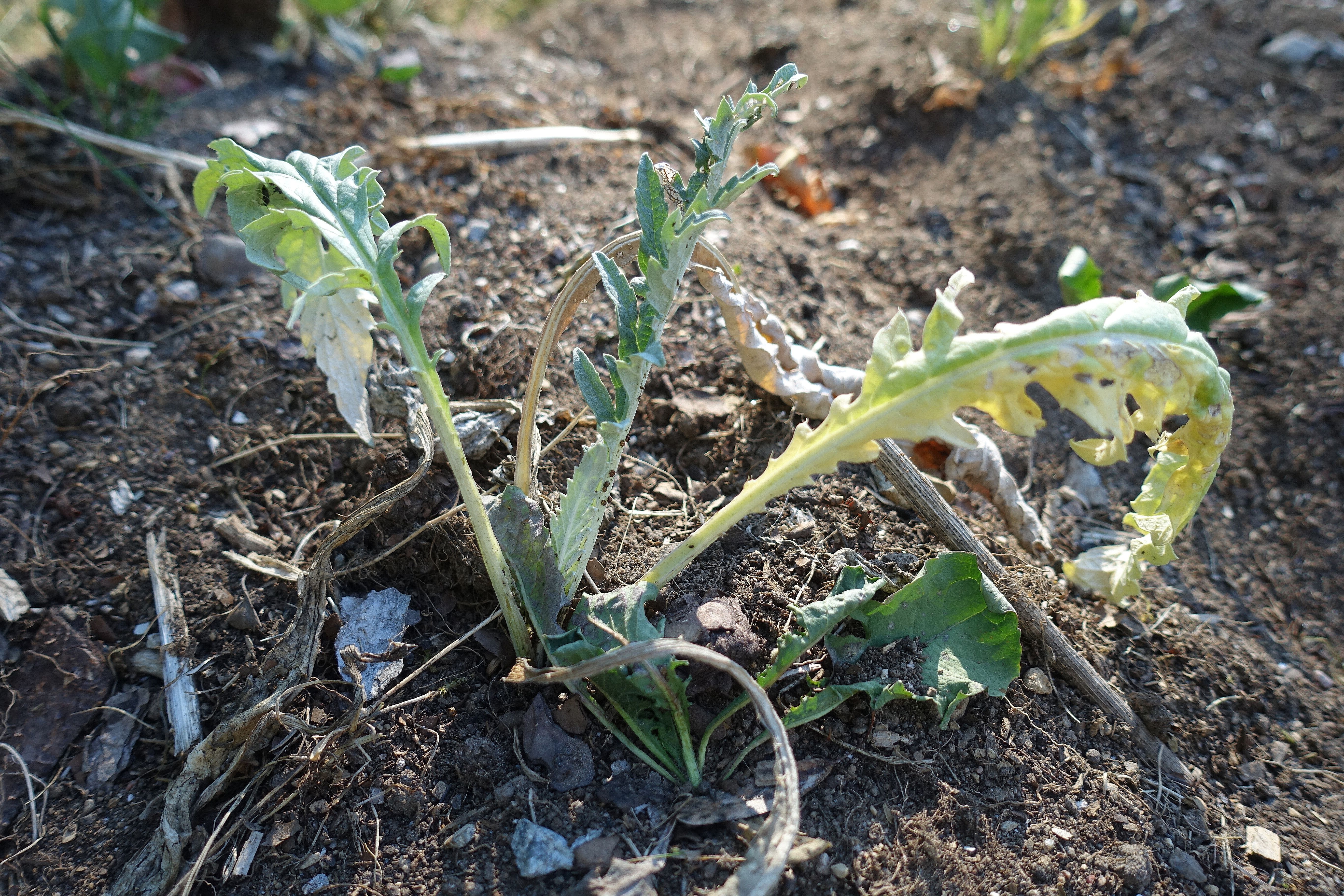
My hard work didn't pay off, this is what my plants looked like in the end of July. I decided that overwintering artichokes in my polytunnel might actually be a better option.
A quick recovery
I'm slightly disappointed that I never got to see my bed filled with beautiful artichokes this year, but I'm still happy about having so many healthy plants. All they needed was a few weeks in pots and a little bit of diluted urine as fertilizer.
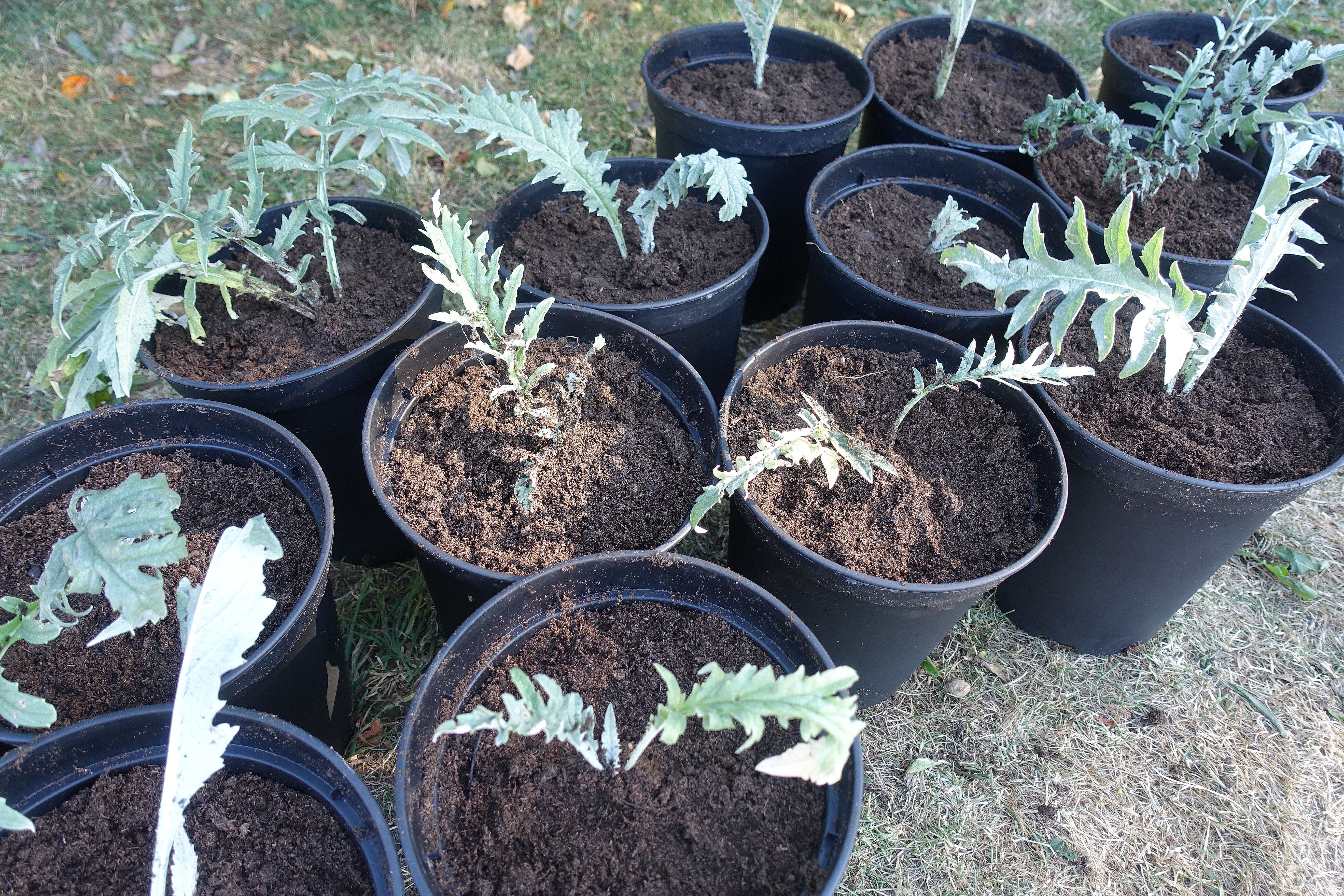
I put my plants in deep pots filled with regular potting soil (fertilized soil.) Artichokes like nutritious soil and I was hoping that I could get them healthy before overwintering them.
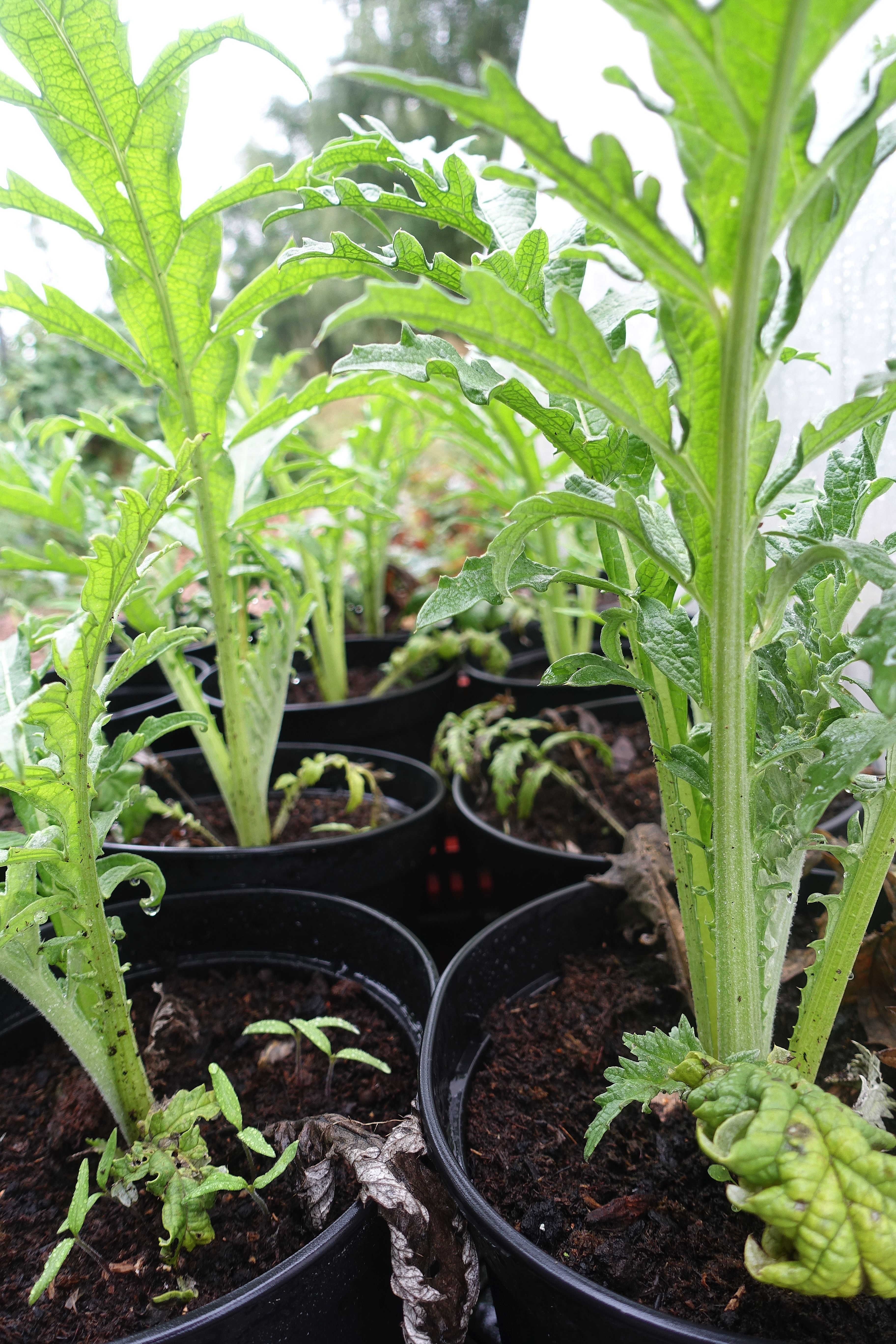
Look how beautiful they are! My plants recovered in just a few weeks. I put them outside next to one of the polytunnels. I have been watering and using a liquid fertilizer regularly and my plants really seem to love it!
My plan now is to simply keep them here until they start to wither. Then, I'll dig a ditch or a hole in one of the tunnels and put the plants, pots and all, quite deep into the soil. After that, I'll put the soil back on top of the plants and add some leaves and a row cover.
It's really important that you remember to water your bed now and then if you are planning on overwintering artichokes this way. You could add some snow on top in winter. The melting snow will keep the soil nice and moist.
Guide: Overwintering artichokes
- Let the plants wither down in fall and leave the plant parts on top of the soil, this will help the insulation.
- Cut the stalk 8-12 inches above ground.
- Add leaves, straw of some other type of insulation over and around the plants, in a large pile. You can leave the cut stalk in the pile.
- If the winter is extra cold, you can put two pallet collars on top of the pile and add a tarp or a lid for some extra protection.
- Lift the mulch gradually as the temperatures rise in spring. Just make sure that you don't dig in the pile, since it's so easy to harm the plant this way.
Some say that the only variety that survives overwintering in Sweden is one called Herrgård, but that's not true. I have tried overwintering artichokes of the variety Herrgård but failed. But I did manage to overwinter both Green Globe and Violet de Provence.
My understanding is that all artichokes need some type of mulch in winter, in most parts of this country. The root system might get hurt and start to rot without this protection. But remember that you might get issues if you pack the mulch too tightly too. Overwintering artichokes is an art for sure.
Keep your fingers crossed for my artichokes!
/Sara Bäckmo
02. September 2018
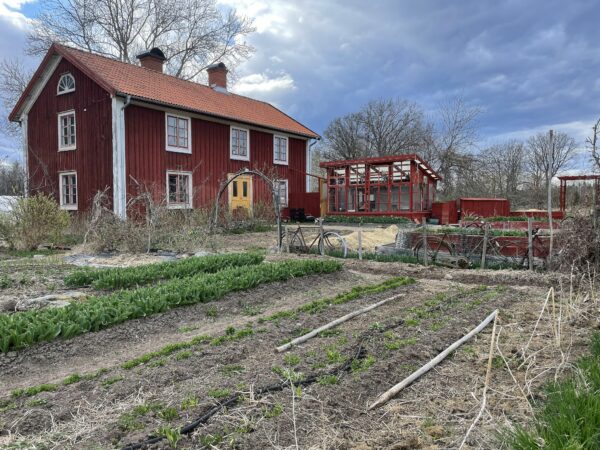
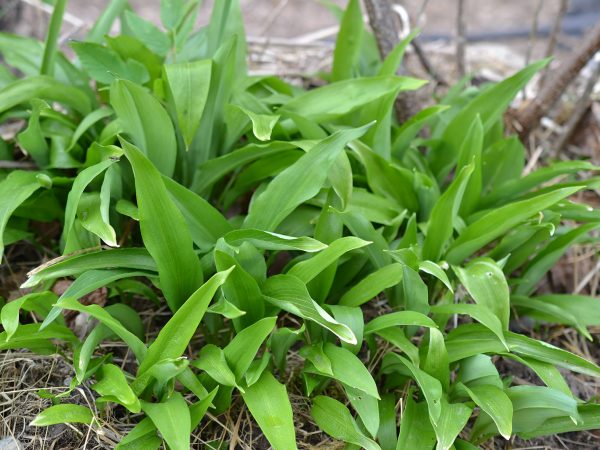
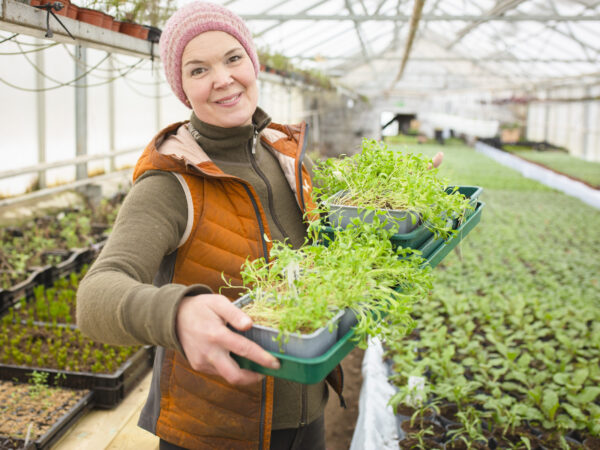
Leave a Reply